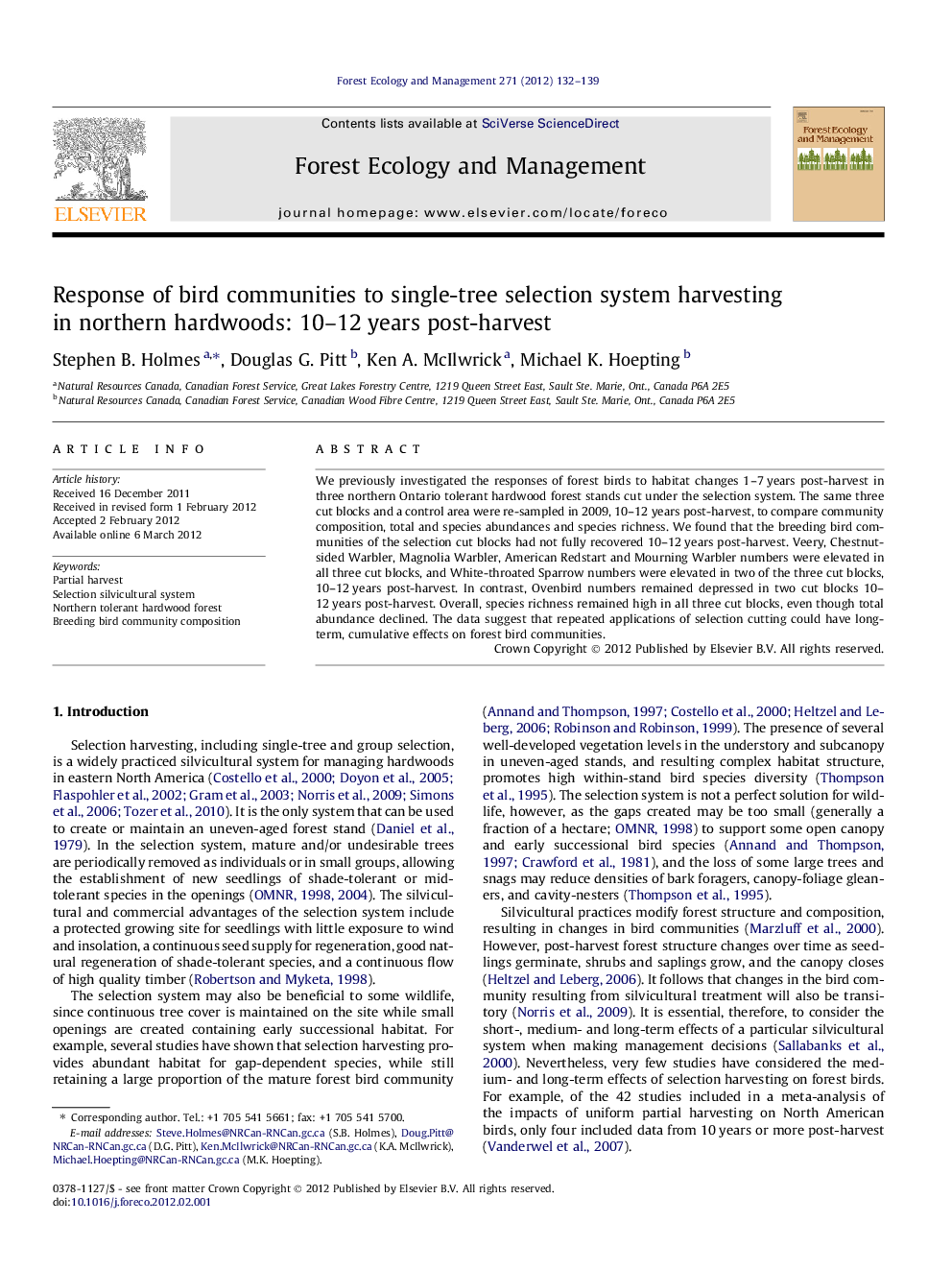| Article ID | Journal | Published Year | Pages | File Type |
|---|---|---|---|---|
| 87407 | Forest Ecology and Management | 2012 | 8 Pages |
We previously investigated the responses of forest birds to habitat changes 1–7 years post-harvest in three northern Ontario tolerant hardwood forest stands cut under the selection system. The same three cut blocks and a control area were re-sampled in 2009, 10–12 years post-harvest, to compare community composition, total and species abundances and species richness. We found that the breeding bird communities of the selection cut blocks had not fully recovered 10–12 years post-harvest. Veery, Chestnut-sided Warbler, Magnolia Warbler, American Redstart and Mourning Warbler numbers were elevated in all three cut blocks, and White-throated Sparrow numbers were elevated in two of the three cut blocks, 10–12 years post-harvest. In contrast, Ovenbird numbers remained depressed in two cut blocks 10–12 years post-harvest. Overall, species richness remained high in all three cut blocks, even though total abundance declined. The data suggest that repeated applications of selection cutting could have long-term, cumulative effects on forest bird communities.
► We studied the effects of partial harvesting on birds in a northern hardwood forest. ► Bird communities had not fully recovered by 10–12 years post-harvest. ► Populations of some early successional species remained elevated. ► Ovenbird numbers were reduced. ► Repeated applications of selection cutting could have cumulative effects on birds.
